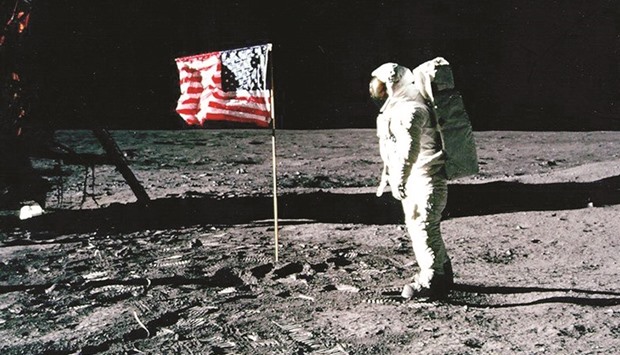Plenty of people still believe the moon landings were staged by the US
government, or that the Illuminati are secretly controlling the world. But scientists
are finding new ways to bring people round to the truth. By Stephen Wolf
On July 21, 1969, Rainer Kresken experienced a defining moment of his life when, aged seven, he watched spellbound as Neil Armstrong became the first person to walk on the moon.
“Without that event I wouldn’t have become who I am today,” says the 54-year-old aerospace engineer, who works at the European Space Agency (ESA) in Darmstadt, Germany.
For years, he’s been defending the Apollo mission with scientific arguments against people who believe the moon landings never happened and were, in fact, propaganda for the US government.
At lectures, he responds to questions about how the astronauts could be pictured on the moon with a US flag blowing in the wind, when there is no air on the moon. There are also questions about why there was no blast crater under the lunar landing module.
The flag was held up by a horizontal bar and moved when it was unfurled, and there was no blast crater because the moon is covered only by a few centimetres of dust. These are facts that can be proven, says Kresken.
He has double checked apparent inconsistencies using scientific methods and has even spoken to the astronauts that took part in the landings. It’s perfectly clear to him that the Americans went to the moon.
Over the years, countless online forums and documentaries have sprung up to discuss whether or not the moon landings took place, with one theory suggesting they were staged by film director Stanley Kubrick.
The plot of the 2016 film Operation Avalanche revolves around a Nasa conspiracy to fake the landings in a film studio when the agency can’t keep to its 1969 deadline.
In fact, conspiracy theories have swirled around the moon landings practically since the day they took place.
“Sure, there are people who don’t want to listen to facts and just hold on to their views,” says Kresken. Some people have even accused him of being a “Nasa thug.”
“But most listeners can be convinced,” he says, adding that people should simply weigh up the arguments sensibly.
It’s not just conspiracy theorists who come to his talks. Lots of people are just curious and want to know more about the topic.
Conspiracy theories abound about all sorts of things, and those focusing on the moon landings are much more harmless than others.
Some people believe there is a secret Jewish organisation seeking world domination, while others talk of the “Illuminati,” who apparently have the same goal.
In Germany there is the “Reichsbuerger” (Reich Citizens) movement, which includes far-right activists who refuse to recognise the legitimacy of the German state.
Media expert Jochen Hoerisch says these kinds of theories appeal to people in a similar way to the more recent phenomenon of “fake news.” They strengthen the beliefs of those who automatically see intrigue everywhere and don’t want to grapple with alternative viewpoints, he says.
Rational arguments can only go so far when it comes to people like this, he says, which can be a threat to democracy.
“Democratic processes work when the stakeholders can support their arguments with undisputed facts and there’s a willingness to compromise,” he says.
Bernd Harder of the German-based Society for the Scientific Investigation of Parasciences (GWUP) sees a rational approach as the best way to start a conversation with conspiracy theorists.
But he warns that you have to ask yourself whether people like that are really interested in facts, or whether their world views are so deeply entrenched that they can’t appreciate rational arguments at all any more.
“Very often – and that’s the problem – it’s not really about questions, but right from the start they have a vague suspicion and a deep mistrust,” says Harder.
In these kinds of cases, people have a certain world view, often a very closed one, and conspiracy theories serve to rationalise their own prejudices, he says.
GWUP was founded in 1987 and investigates parasciences – subjects that can’t be explained by accepted scientific methods – using the scientific information available, and publishing reports. All kinds of researchers are involved with the society.
Harder says the society is very concerned that conspiracy theories and fake news could become an uncontrollable force.
“At the end of the day it will be about trying to find ways of actually reaching people who aren’t on your own wavelength.
“About thinking openly, about sensitising people and developing new strategies to combat radicalisation. That seems at the moment to be the only way,” he says.
The now 87-year-old astronaut Buzz Aldrin, the second man on the moon, has already made it clear what he thinks of the conspiracy theorists who doubt the moon landings.
When documentary maker Bart Sibrel accused him in 2002 of faking them and asked him to swear on the Bible that he had been to the moon, Aldrin punched him in the face. – DPA

Buzz Aldrin standing by the US flag planted on the surface of the moon.


